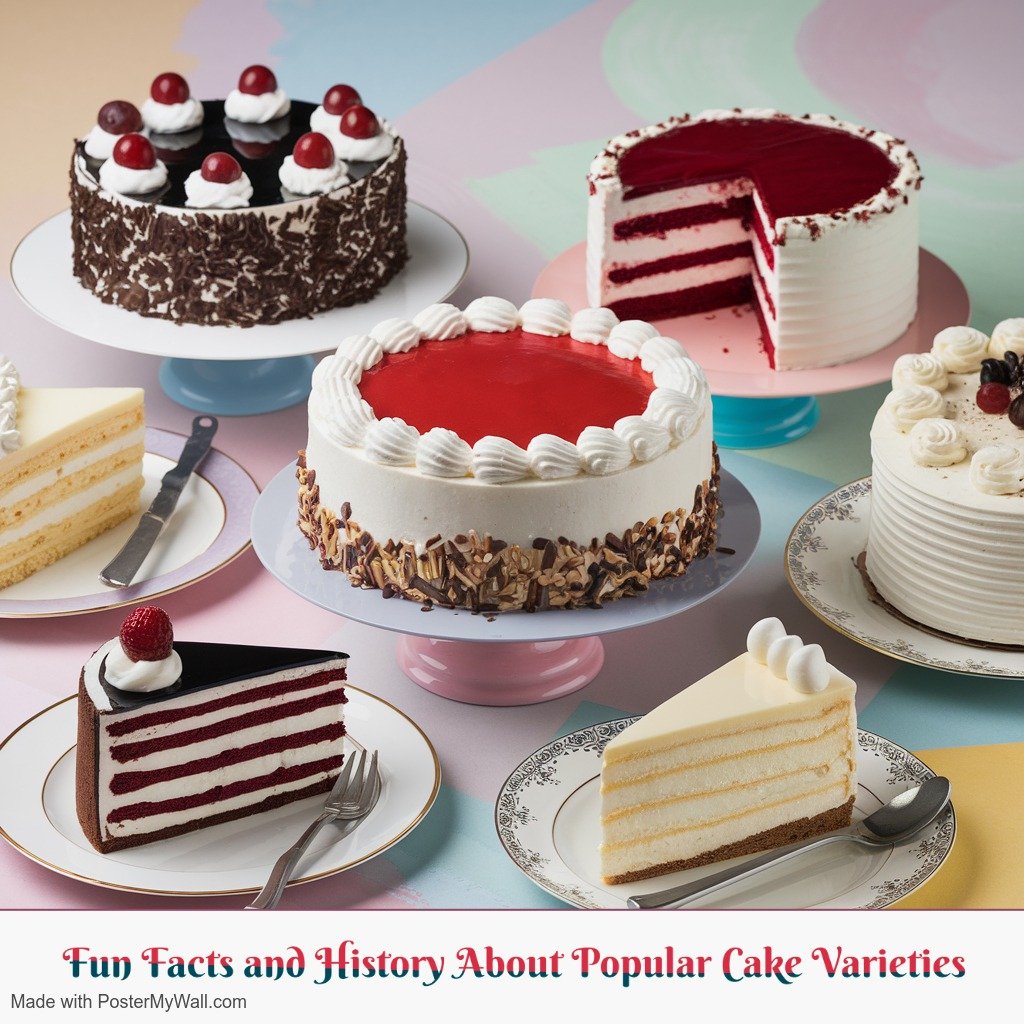Fun Facts and History About Popular Cake Varieties
Cakes have been a part of our celebrations for centuries, with each variety carrying its own unique history and fun facts. From birthday cakes to wedding cakes, every type has a story that adds to its charm. Let’s take a journey through some popular cake varieties and uncover interesting tidbits about their origins!
1. Black Forest Cake: A German Classic
Originating from Germany, the Black Forest Cake is named after the Black Forest region. Traditionally, this decadent cake is made with layers of chocolate sponge, whipped cream, cherries, and a splash of cherry schnapps, giving it a rich flavor. The cake is decorated with chocolate shavings and cherries, symbolizing the colors of traditional Black Forest costumes!
- Fun Fact: In Germany, it’s known as Schwarzwälder Kirschtorte, and by law, the authentic version must contain kirschwasser (cherry brandy).
2. Red Velvet Cake: The Cake of the South
The Red Velvet Cake is a Southern favorite in the United States, known for its vibrant red color and soft, velvety texture. During World War II, bakers used beet juice to add color to cakes when food coloring was scarce. Today, red velvet is made with cocoa and buttermilk, giving it a mild chocolate flavor.
- Fun Fact: The red color was initially a reaction between cocoa and acidic ingredients like vinegar or buttermilk, making it naturally reddish before food coloring was popularized.
3. Cheesecake: Ancient Greek Delicacy
Cheesecake might seem like a modern dessert, but its history dates back to ancient Greece! It was even served to athletes during the first Olympic Games in 776 BC. Today’s cheesecakes come in different varieties: New York-style, baked, or no-bake. Rich and creamy, it’s the ultimate dessert for cheese lovers!
- Fun Fact: The original cheesecake recipe included just four ingredients: flour, wheat, honey, and cheese!
4. Tiramisu: The Italian Pick-Me-Up
The name Tiramisu means “pick me up” in Italian, and it’s easy to see why! This Italian dessert is made with layers of coffee-soaked ladyfingers, mascarpone cheese, cocoa powder, and sometimes a hint of liqueur. It was first created in the 1960s in the Veneto region of Italy.
- Fun Fact: Tiramisu became popular outside Italy only in the 1980s, when Italian restaurants started serving it abroad.
5. Carrot Cake: A Medieval Favorite
Though Carrot Cake is popular today, especially with its cream cheese frosting, its roots go back to the Middle Ages. During that time, sweeteners were scarce, and carrots were used to naturally sweeten cakes and puddings. The modern version includes cinnamon, walnuts, and sometimes pineapple or raisins.
- Fun Fact: During World War II, carrot cake saw a resurgence in popularity because of sugar rationing, as carrots provided a natural alternative sweetener.
6. Pound Cake: Simple Yet Elegant
Named for its simple recipe—one pound each of butter, sugar, eggs, and flour—the Pound Cake has been around since the early 18th century. Over time, the recipe has evolved, with bakers adding vanilla, citrus zest, or even swapping ingredients for lighter versions.
- Fun Fact: The original pound cake recipe was meant to serve large gatherings, and in earlier times, no leavening agents like baking powder were used!
7. Victoria Sponge Cake: A Royal Favorite
Named after Queen Victoria, who reportedly enjoyed it with her afternoon tea, the Victoria Sponge Cake consists of two layers of sponge cake with a jam and buttercream filling. It’s a British teatime classic, and has been a staple of British baking ever since.
- Fun Fact: The cake was originally known as a “Victoria Sandwich” because of its two layers, like a sandwich!
8. Angel Food Cake: Heavenly Lightness
Angel Food Cake is a light and airy dessert made primarily with egg whites, sugar, and flour. This cake became popular in the U.S. in the 19th century due to the availability of mass-produced cake molds. It’s known for its fluffy texture and often served with whipped cream and fresh fruit.
- Fun Fact: Angel food cake got its name because of its pure white color and its lightness, making people associate it with angels!
Wrapping It Up
Each cake variety has its own fascinating story that makes it more than just a delicious treat—it’s a piece of culinary history. Next time you enjoy one of these popular cakes, you’ll know a bit more about the legacy behind the flavor! Whether you love the classic Black Forest or the delicate Victoria Sponge, every slice is a celebration of tradition and taste.

